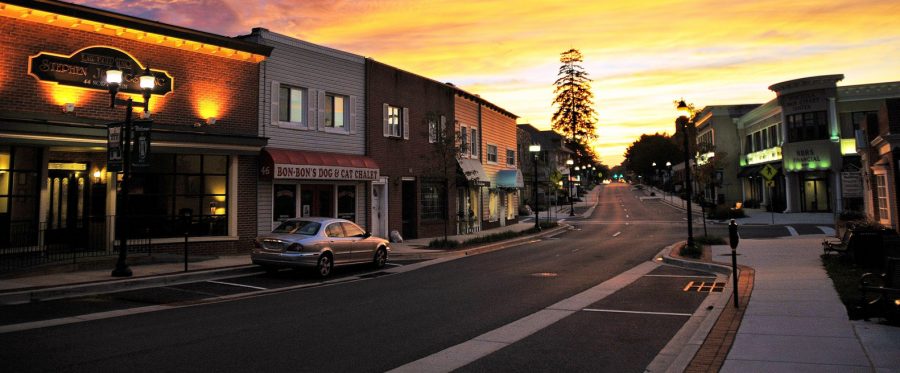Brief History of Bel Air
January 27, 2017
For many of us in the Bel Air, our town is an important part of our everyday lives. Unfortunately, the history of our community is not always the first thing that comes to mind when we hear the words Bel Air, so here is a brief history of some important events that have helped shape our glorious community.
As Bel Air, originally called “Scott’s Old Fields” in 1731 by Danielle Scott, grew from its original number of 42 people, Harford County’s commissioner opted to change the name in 1735 to “Belle Aire”, meaning “beautiful area” in French, to entice more residents to live here. In 1798, the town’s name faced its final change to Bel Air when the town’s court records dropped the additional letters due to convenience. However, despite all its name changes, the town itself was not incorporated until 1901.

Bel Air used to be the home of John Wilkes Booth’s family, with the performers living in Tudor Hall, from 1852 up until 1856. The building was originally built for John’s father, Junius Brutus Booth as the family’s country retreat, but following his death became the home of his wife, Mary Anne Holmes, daughters, Asia and Rosalie, and sons John Wilkes and Joseph. After the Booths moved away, the house was then sold to various homeowners, before being sold in 2006 to Harford County. Today, the building is considered a historic landmark within the town with The Historical Society of Harford County periodically running tours through the house throughout the year for $5.

From 1870 up until 1960, Bel Air had a horseracing track titled “Bel Air Racetrack”, which was located where the Harford Mall now exists. Ray Bryson, the owner during the 1930’s, expanded and refurbished the building in 1936 by purchasing more land to add to the 100-acre area to make a ¾ mile long field for the races. Unfortunately, starting in the 1940’s the business faced public and political outcry which eventually lead to its closure in 1960 shortly after Ray Bryson died. Thirteen years later, the well-known Harford Mall was constructed on site. Today, there are five notable horseracing tracks in Maryland: Laurel Park, Maryland Jockey Club, Oceans Down, Pimlico, and Rosecroft Raceway.

The Bel Air Railway operated in the town between the years of 1883 up until 1958 before it fell into dilapidation and disrepair. The station was originally built in December 1883 as part of the Maryland and Pennsylvania Railroad and labeled station number twenty-seven. Its main job was to ship packages quickly throughout Bel Air; however, it did run passenger services during its existence. Unfortunately, the railroad faced economic issues after the 1950’s, and the public lost interest in taking care of the railway. By August 1954, the railway had stopped running any services which eventually led to its complete destruction in 1961.

During 1970, the town was scheduled to hold the trial of H. Rap Brown, a civil rights activist, who was being charged for inciting a riot in Cambridge, Maryland, and carrying a gun over state lines. However, he escaped trial after two of his friends, Ralph Featherstone and William Payne, drove a car filled with explosives down Route 1 attempting to blow up the Bel Air Courthouse. The vehicle ended up exploding just a mile short of the building, resulting in the death and dismemberment of the two men. The following day, Brown escaped due to a similar incident occurring at the Cambridge courthouse, but was recaptured in the following year and sentenced to five years in jail. Today, he is serving a life sentence at The United States Penitentiary, Tucson for murder with no chance of parole.

On Feb. 2, 1972, Main Street nearly burnt to the ground by a four-hour-long fire during an event titled, “The Great Bel Air Fire.” Early in the morning, a fire was started when a fuel tank from the Bel Air Office Products building caught fire from the Red Fox Restaurants gas-fired water heater. It then spread throughout Main Street, destroying the Red Fox, Bel Air Recreation Center, Bel Air Office Products, Main Street Market, Talles Jewelry Store, and Smithson’s Barber beyond saving. Lucky for the town, nobody died or suffered any major injuries; however, the overall damage to the town cost two-million dollars to repair. Today, many of the businesses that had been destroyed have been rebuilt in different locations around town, but in the case of The Red Fox Restaurant, it went out of business within the 45-year timeframe and is no longer a part of the town.
Bel Air now has a population of nearly ten thousand residents and is about 3.03 square miles in total with each person working together to improve our community for a better future. Every day, all of us in the school and across Bel Air are making history that will shape our humble town and prepare it for the next generation.


